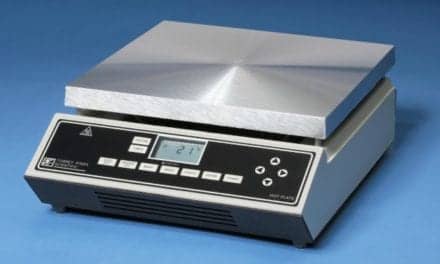Even as automation accelerates, hands-on micromanipulation remains essential for precision tasks, exploratory research, and applications where human judgment outperforms algorithms.
By Linda Vidova
As laboratory automation continues to advance, one could assume that manual micromanipulation—a fine control of tools known as micromanipulators in combination with a microscope—might soon become obsolete.
However, manual control remains an essential component of many cutting-edge experiments. From single-cell research to microinjection and electrophysiology, the use of manual micromanipulators underpins some of the most precise and delicate operations in the lab.
Why Manual Micromanipulation Still Matters
Automated systems have made laboratory workflows easier by enabling high-throughput experiments and reproducible results. However, there are limits to what full automation can achieve when dealing with microscopic structures or living cells, as variability in cell morphology, unpredictable motion in fluids, or minor differences in adhesion can significantly alter outcomes.
Manual micromanipulation remains essential during exploratory or developmental stages of research, where protocols are not yet standardized and the experimenter’s judgement remains the most reliable guide. Through direct visual feedback and physical control, skilled operators can make intuitive decisions, allowing them to adjust to subtle cues such as changes in cell tension, droplet formation, or refractive patterns that may escape algorithmic detection.
This capacity for “on-the-fly” decision-making is critical in scenarios involving delicate procedures, such as embryo injection, patch clamping, or single-cell isolation, where the difference between success and failure can be a fraction of a micrometer or a millisecond.
Manual control offers a deeper understanding of the system itself. The physical engagement between the researcher and the specimen often reveals insights that drive innovation. During exploratory or developmental stages of research, human operators can navigate unexplored experimental territory, adjusting techniques and hypothesis in real time.
Precision, Stability, and Control
Modern manual micromanipulators have evolved to offer exceptional precision and mechanical stability. Smooth, vibration-free movement enables positioning with submicron accuracy, characteristics which are essential for applications like patch-clamp electrophysiology, microinjection, or single-cell sampling. Manual micromanipulators provide this level of control without introducing electrical or mechanical noise, as their mechanical simplicity avoids the interference that can occur with motor-driven systems.
Beyond precision, mechanical stability is a defining feature of high-quality manual systems. Thanks to the ability to minimize drift and eliminate external vibrations, these devices can maintain consistent positioning over an extended period, which is particularly crucial during experiments that require prolonged observation or manipulation. Additionally, the stability helps eliminate the risk of damaging fragile specimens by preserving cell integrity during delicate procedures. The simplicity of their mechanical structure also reduces maintenance complexity, which gives the researcher confidence that their tools will perform consistently under demanding conditions.
The combination of precision, stability, and tactile feedback makes manual micromanipulators integral for experiments where control is paramount, and reproducibility depends on the operator’s skill as much as on the equipment itself.
Integrating Manual and Automatic Workflows
Rather than thinking of manual micromanipulation and automation as opposing approaches, one should consider them as a counterbalance. As such, the maximum efficiency is achieved when manual control complements automated systems.
Many laboratories now integrate manual tools within semi-automated workflows that create a synergistic system, which balances precision, adaptability, and scale. Manual micromanipulators are frequently used during method development and calibration, allowing researchers to establish reliable parameters before scaling up to automated systems. For example, a researcher may manually fine-tune the positioning of cells, embryos, or microelectrodes to determine optimal parameters such as injection depth, pressure, or approach angle. Once these parameters are established, automated systems can replicate the procedure with high consistency across larger sample sizes, significantly increasing throughput while maintaining the quality of results.
This integration also supports experimental validation. Manual manipulation allows researchers to confirm that automated protocols perform as expected under varying conditions, providing a safeguard against algorithmic errors or unforeseen biological variability. By using manual control to inform, refine, and validate automated processes, laboratories can achieve outcomes that neither approach could deliver alone.
Best Practices for Implementation
The performance of manual micromanipulation depends not only on the quality of the instrument but also on the setup, calibration, and ongoing maintenance. Proper implementation ensures that researchers can fully leverage the precision, stability, and control these devices offer.
Micromanipulators should be mounted on a vibration-isolated platform and aligned with the optical axis of the microscope. Stable mounting and careful ergonomic positioning minimize drift, which occurs over time when the probe gradually moves, and operator fatigue. Both of these are especially important for long experimental sessions. Regular calibration checks further ensure reproducible positioning and consistent results over time.
By following these, researchers can maximize the reliability and effectiveness of manual micromanipulators, creating a controlled and reproducible environment that supports both exploratory research and routine experimental workflows.
Applications Across Disciplines
Micromanipulation in Electrophysiology
The patch-clamp technique remains one of the most important tools in electrophysiology. It allows researchers to measure ionic currents through individual ion channels or across whole-cell membranes, providing detailed insights into nerve activity, muscle contraction, and other physiological processes.
A standard patch-clamp setup typically includes an inverted or upright microscope mounted on an anti-vibration table, two manual micromanipulators holding patch pipettes or stimulating electrodes, an amplifier system, and a perfusion chamber. A manual micromanipulator provides the necessary stability for these delicate measurements without introducing noise from motors or software.
Voltage-clamp experiments, commonly used in neuroscience, cardiophysiology, endocrinology, and microbiology, rely on specialized electronics to hold the membrane potential at a fixed value while measuring the resulting ionic currents. Accurate measurements in these experiments depend on precise positioning of pipettes and electrodes, which makes manual manipulators ideal for this application.
Biosensor Development
Although micromanipulators are most often associated with experimental research, they also play a critical role in the development and calibration of biosensors. Especially when it comes to the engineering of electrochemical and microfluidic systems. In these applications, precise positioning is key to ensuring accuracy and reproducibility.
A clear example of this can be seen in hydrogen peroxide detection studies. Here, researchers use manual micromanipulators to calibrate platinum microelectrode arrays by positioning them in stirred solutions of known analyte concentration. Once calibrated, these same sensors can be transferred to cell culture wells to monitor oxidative bursts in real time.
Microinjection and Genetic Research
Microinjection is a micromanipulation technique that allows researchers to introduce DNA, RNA, or proteins directly into individual cells. Using fine glass micropipettes and controlled hydrostatic pressure, this method provides precise delivery, accurate targeting, and compatibility with live-cell and embryo experiments. Applications of microinjection include transgenic animal research, single-cell genomics, gene delivery as well as in vivo gene regulation. By combining precise manipulation with real-time control, microinjection remains a key tool in both developmental biology and cellular research.
Micromanipulation in the Food Industry
Beyond biology and medicine, micromanipulation plays a growing role in food safety, microbiology, and fermentation technology. One example of such application is the yeast and bacterial strain improvement, where the microbes used in brewing, dairy or baking can be modified. Another example would be the embryo and pollen micromanipulation during which a hybrid crop can be produced, and embryo rescue in plant technology is supported.
The Role of Manual Tools in the Future
Automation and AI-driven systems will continue to expand laboratory capabilities, but manual techniques, including micromanipulation, will remain integral to discovery. Because it provides the adaptability needed in early-stage experiments and the precision required in complex manipulations, rather than being replaced, manual control will continue to complement automated systems.
This will allow the bridging of the gap between exploratory research and high-throughput workflows and maintaining its role as a trusted tool in the modern scientific lab. The complementary relationship between automation and manual micromanipulation will likely take the form of hybrid testing approach, where automation will handle repetitive checks, while the researcher with the manual tools will focus on tasks requiring critical thinking and nuanced decision-making.
Ultimately, while AI and automation can reduce costs and increase efficiency, they also demand that testers adapt and upskill to stay relevant in an evolving testing landscape.
ID 28332372 © Alexander Traksel | Dreamstime.com
About the author: Linda Vidova is one of the scientific writers at Ossila. She is currently completing her PhD in cancer genetics. She is interested in data-driven experimental design and the intersection between biotechnology and materials science.





